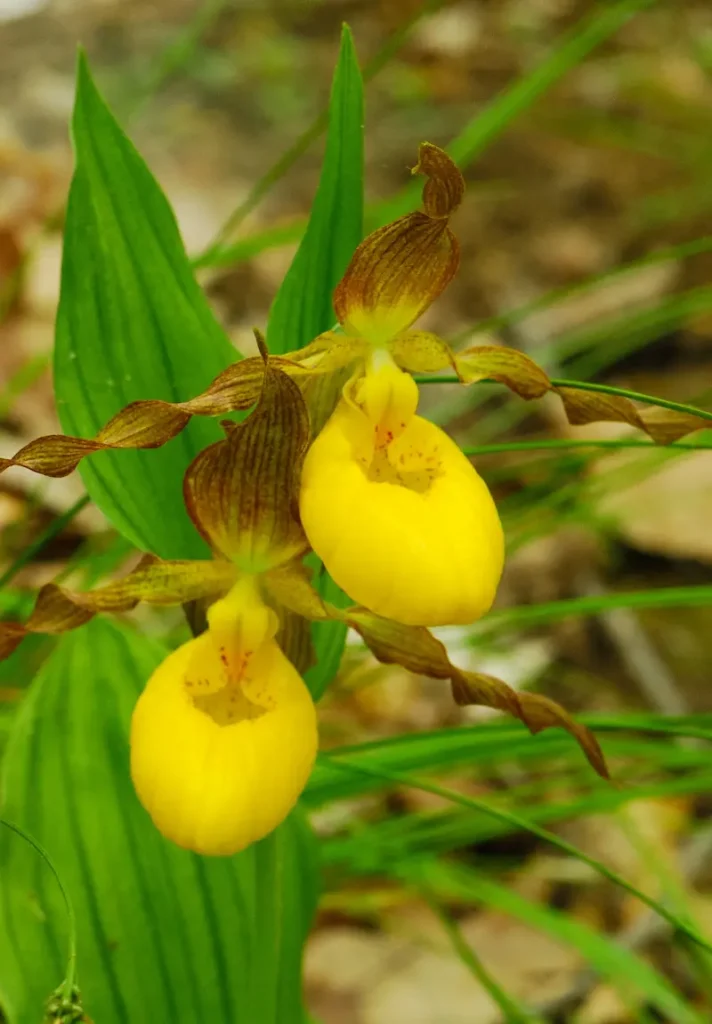Outdoor Orchids For Shade Gardens
Outdoor orchids that grow well in a shade garden are perfect for gardeners looking for a challenging plant. Able to thrive in environments where cold winters are the norm, gardeners who grow indoor orchids will easily recognize the beloved flower forms. Gardeners can turn to Bletilla, Calanthe, Cypripedium or Spiranthes for inspiration, both in species plants and hybrid cultivars.
Hardy orchids are not for the faint-of-heart gardener but those who love plants have found success growing them as natives among a wildflower planting, in a shaded garden or as a cherished, and protected, specimen plant. Gardeners will want a well thought-out site, taking into account the expense, when choosing where to plant these woodland perennials.
Before trying outdoor orchids, it wouldbe good to be knowledgeable in orchid care.
Spring Blooming Ground Orchid Bletilla
Another among outdoor orchids is the Bletilla striata, called the Chinese ground orchid, which is hardy in zones 5 – 9. As its name implies, Bletialla is a native of China and Japan. Issuing up from the center of the plant, the long leafless stems are lined with quintessential orchid blooms flourishing in spring. The foliage in mass, which reaches approximately 12” – 24” tall and wide, looks like swords of grass but more papery than the leaves of bearded iris, for instance. Although Bletilla striata may tolerate a full sun location in a northern garden, a partly shaded planting bed is best for plants to thrive long term. The soil should be well amended with organic matter if a humus texture is missing. Mulch is wise to use for protection against drought conditions in summer and freezing temperatures in winter.
Old and new Bletilla striata cultivars include:
- B. ‘Albostriata’ has a strip of white edging the margins along the leaves. The flowers are the usual purple color.
- B. ‘Alba’ has white flowers.
- B. ‘Big Bob’ has lavender sepals and petals but the lip has a hint of white.
Bletilla striata grows from pseudo bulbs. Like other hardy orchids, more plants can be had by digging up and dividing the plants or, in this case, dividing the bulbs. Overwintering and growing the bulbs indoors as a houseplant is another way of saving these orchids until the next spring.
Calanthe Hardy Yellow Orchid
Calanthe is another hardy orchid genus from which to choose. Calanthe discolor and Calanthe sieboldii, a hardy yellow orchid, is limited to zones 7 – 9. Gardeners who wish to push the boundaries of hardiness will consider late spring frosts their enemy; something to guard against. Calanthe orchids have very vertical racemes, up to 15” tall, on a plant whose leaves are more oblong than narrow. This hardy orchid likes shade in a wooded environment and makes good companion plantings for blue hosta and Solomon’s seal perennials.
Cypripedium Called Lady’s Slipper Orchid
Cypripedium, called lady’s slipper, is an orchid with a hardiness range of 2 – 7. Cypripedium has species native to southern areas of eastern North America, making it ideal for woodland wildflower gardens. This orchid plant benefits from leaf mold mulch under a canopy of trees and prefers acidic soils.
The Cypripedium plant grows up to 24” tall with leaves that have an accordion appearance resulting from the vertical veining. Each spring flower is made up of three petals and an exaggerated lip called the pouch, also an iconic feature of many orchid species.

Fall Blooming Spiranthes Chadds Ford
Spiranthes cernua is a fall blooming hardy orchid, which is more reliable for northern gardeners. The native orchid ranges from Canada to the southeastern United States, from zones 4 – 8. The common name is ladies tresses and has a fragrant flower. Spiranthes cernua f. odoratea ‘Chadds Ford’ was rescued in the 1960s in Bear, Delaware, that since has been bred into cultivation. The hardiness range, distinctive flower spike and native plant distinction makes Spiranthes cernua f. oderatea ‘Chadds Ford’ a good choice for native gardeners looking for autumn flowers.
Protecting Wild and Hybrid Orchids
Protecting the hardy orchid should be part of a maintenance care plan, first consider the site of the planting bed. Culprits that threaten orchids outside can come in the form of two-legged Homo-sapiens or four-legged mammals, as well as insects who want to feast on the succulent plant. Hardy orchids can be sited as a specimen plant in a private garden to keep it safe from theft or as a collection surrounded by less favored plants to deter wildlife. Slugs like orchids outside, as well as hostas, so use strategies to dissuade slugs from chewing up the foliage. Although there is an increase in hybridizing orchids, the cost of a hardy orchid is still prohibitive for many. Plant lovers know it is no less dangerous for wild orchids threatened in the native plant world so gardeners must recognize they are the orchids’ first line of defense, by not creating a market for species harvested from the wild.
Shady Loving Perennial Plants with Outdoor Orchids
Gardeners can successfully grow orchids outdoors as long as the correct habitat is provided. Whether a species or hybrid plant, the hardy orchid makes an excellent singular choice for the north side of a building or several planted among like-minded shade-loving plants.
Tiarella, Heuchera and Lilium Martagon perennials and woodland ferns are more plants that, combined with hardy orchids, will grow to make an interesting landscape.
Author Bio:
Hi I’m Ann Sanders, a Founder of A Green Hand, a blog dedicated to offering a platform for gardening and healthy living enthusiasts to exchange ideas so we can all play a role in making our world a better place. You can follow me on Facebook







Leave a Reply
You must be logged in to post a comment.